Logistics
Warehousing & Fulfillment
Transportation
E-commerce
E-commerce Fulfillment Services
Lease & Maintenance
Semi Trucks
Supply Chain Technology
Logistics
E-commerce
Lease & Maintenance
Buy Used Trucks
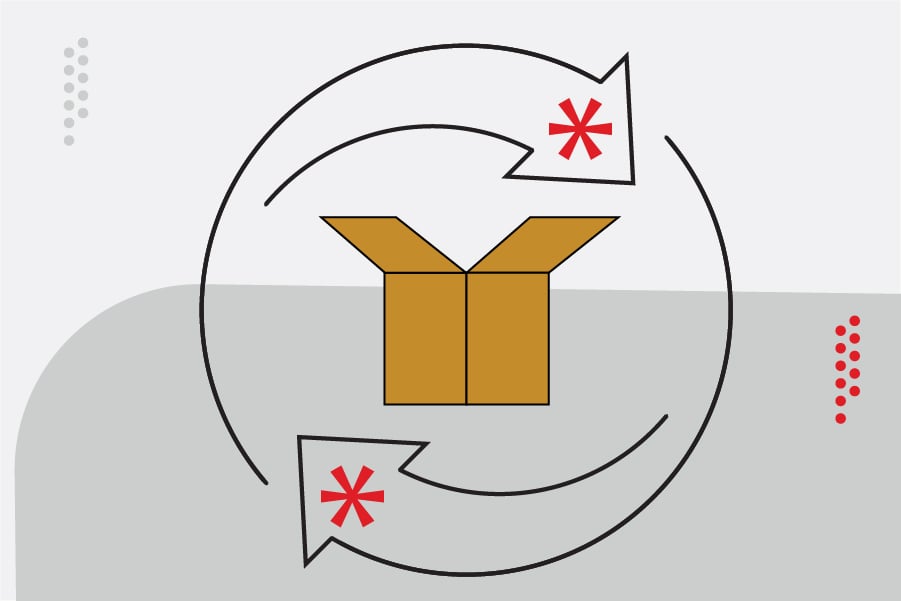
E-commerce provides consumers with unparalleled choice and 24/7 availability. So, it's hardly surprising that we're flocking to online shopping sites more than ever before. Between 2023 to 2027, total e-commerce sales are forecast to increase by $2.3 trillion - an overall rise of 38.9%.
But there's a dark side to this convenience. The more packages that arrive on our doorsteps, the more packaging and plastic waste generated - ending up in our landfills and oceans.
From excessive packaging to plastic packaging that cannot be recycled, we've all experienced these difficulties first-hand when shopping online. But as consumers grow more conscious about sustainability, the environmental impact of e-commerce packaging is becoming a bigger sticking point when it comes to customer loyalty.
In this post, we're going to discuss why packaging waste is a growing problem in e-commerce – and what brands can do to avoid contributing to the problem.
So, just how bad is the packaging waste epidemic in the e-commerce industry? Let's take a look:
E-commerce packaging is already filling our recycling bins and trash with bubble wrap and plastic waste – and it's set to get worse due to several factors:
E-commerce has been experiencing steady growth for several years. But the COVID-19 pandemic led to a massive acceleration in online sales. In 2020, global e-commerce sales jumped from $3.3 trillion to $4.2 trillion YOY, highlighting how consumer shopping habits have shifted away from traditional retail and physical stores.
In sum, sustained high order volumes are the ‘new normal' for e-commerce – and more orders mean more packaging waste.
A split shipment is when an order containing multiple items is split into separate packages for shipping to the end customer, rather than being sent together as one parcel.
This often happens when the requested items are not present in the same fulfillment center. Thanks to the rise of multi-node e-commerce fulfillment strategies to shorten delivery timeframes, split shipments have become more commonplace. Moreover, the rise of DIM weight as a pricing tool means it can work out as cheaper for brands to ship an order as two or more smaller parcels, instead of a single one that takes up more space.
Obviously, split shipments aren't good news for environmental impact. If a customer receives their order in two or even three separate deliveries, this means double or triple the amount of packaging is required – and therefore double or triple the amount of packaging waste.
No matter how many e-commerce orders you ship, there's always going to be a percentage that boomerang back into the warehouse.
Thanks to the difficulty of buying products unseen or untested, persistently high return rates are a feature of the e-commerce supply chain. But there's one trend in particular that contributes to return volumes; the practice of ‘bracketing'.
‘Bracketing', also known as ‘try before you buy', is when a consumer purchases multiple versions of the same item to try at home. This is particularly common in apparel and footwear, where many SKU variants exist for size and color.
Bracketing is entirely logical from a consumer standpoint. Nobody wants to accidentally buy the wrong size and waste time trying a arrange an exchange for the right one. It's often easier to buy several versions at the same time, then simply return what you don't need.
However, bracketing creates immense difficulties for online sellers. As well as processing a higher rate of returns, bracketing also requires more packaging materials to be used per order – creating more e-commerce packaging waste to be thrown out when the order arrives.
For example, if a customer buys a t-shirt, a brand can ship this out in a single mailer bag. But if they bracket by adding a couple of extra sizes or colors to their order, this may demand one or multiple corrugated box shipments. This results in more packaging being used and discarded.
What do we do with packaging when an online order arrives on our doorstep?
Answer: We throw it straight in the trash.
This is at the core of what perpetuates e-commerce packaging waste; most e-commerce packaging simply isn't designed with sustainability in mind.
In the typical online shopping journey, packaging has a single purpose – to get customer orders safely to the delivery destination. Once this purpose has been fulfilled, the packaging is of no further use. This is known as a ‘linear economy', where items move through a one-way direction of production, use, and disposal.
Aside from alleviating the obvious environmental impact of plastic packaging waste, e-commerce brands have a lot to gain from embracing waste reduction strategies.
As the literal face of your brand, packaging design is a key area of focus for consumers who are trying to assess your eco-friendliness. According to the Global Sustainability Study, 85% of respondents globally have adjusted their purchasing habits to become more sustainable in the past five years. Moreover, 60% of consumers say that sustainability is a key factor in choosing products and brands.
Wasteful packaging, to put it simply, is now bad for business. If your brand wants to stay on the pulse of what consumers are looking for, a sustainable packaging design that reduces packaging waste is no longer optional.
We've all been on receiving end of an excessively-packaged online purchase. It's finding a huge box sitting on your doorstep – only to find upon opening that the item it houses could have fitted into a container many times smaller.
Excessive packaging is one of consumers' biggest pet peeves about online shopping, with almost a fifth of customers saying that it negatively impacts the brand experience. So common is this scenario that numerous Reddit threads are dedicated to over-packaging, creating a space for consumers to share their biggest e-commerce ‘packaging fails':
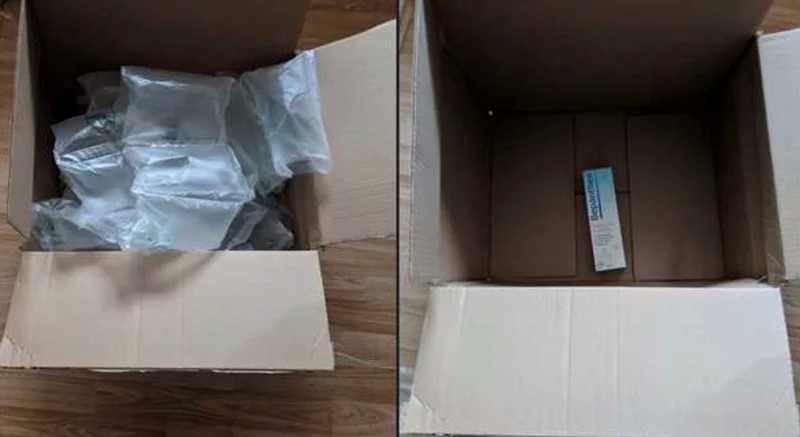
It's not difficult to see why consumers find over-packaging highly frustrating. The more packaging your business uses, the more packaging waste your customers will have to dispose of upon delivery. And when consumers are actively taking steps to be more sustainable, experiences like this can be perceived as your brand sabotaging their efforts.
Over-packaging happens due to a mismatch between a brand's product catalog and the packaging materials available at their warehouse or 3PL. If packaging blueprints aren't continually revised as new SKUs come in, staff may be forced to pack small items into too-large containers – and use multiple layers of air pillows, bubble wrap, and peanuts to cushion items from damage.
Brand can avoid over-packaging by ensuring their warehouse has a variety of container sizes at their disposal, including mailer bags for small items that don't require boxes. As well as saving money on containers, this also reduces the amount of packing filler you need to use.
Plastic packaging continues to be one of the biggest contributors of packaging waste, with enough plastic waste thrown away every year to circle the globe four times over.
Your average e-commerce package isn't just a cardboard box, but a smorgasbord of bubble wrap, air pillows, and corrugated fiberboard. This has to be disposed, and most consumers are left with few options apart from general waste.
The impact of single-use plastics is not exactly a secret, but what about ‘recyclable' plastic packaging?
As scrutiny over the plastic packaging waste further increases, grocery store chains and retailers have begun implementing recyclable soft plastics into their supply chains. However, this is not as eco-friendly as it may seem.
While recyclable plastic packaging does exist, there is often a lack of transparency over the process. Many counties and states in the U.S. don't allow for the curbside recycling of soft plastics. This means most soft plastics that people try to recycle are directed straight to the landfill – a major blow for conscious consumers trying to do the right thing with plastic waste.
So, what can you do to reduce your reliance on plastic packaging?
Paper-based packaging is a great replacement for plastic in wrapping or cushioning objects. Paper is a recyclable material, easy to source, and gives product packaging more premium appearance, which is great for enhancing the customer experience.
A study by the Paper and Packaging Board found that 71% of consumers were more likely to buy from brands that package their products in paper or cardboard, while 63% said that paper and cardboard packaging makes a product seem premium or high quality.
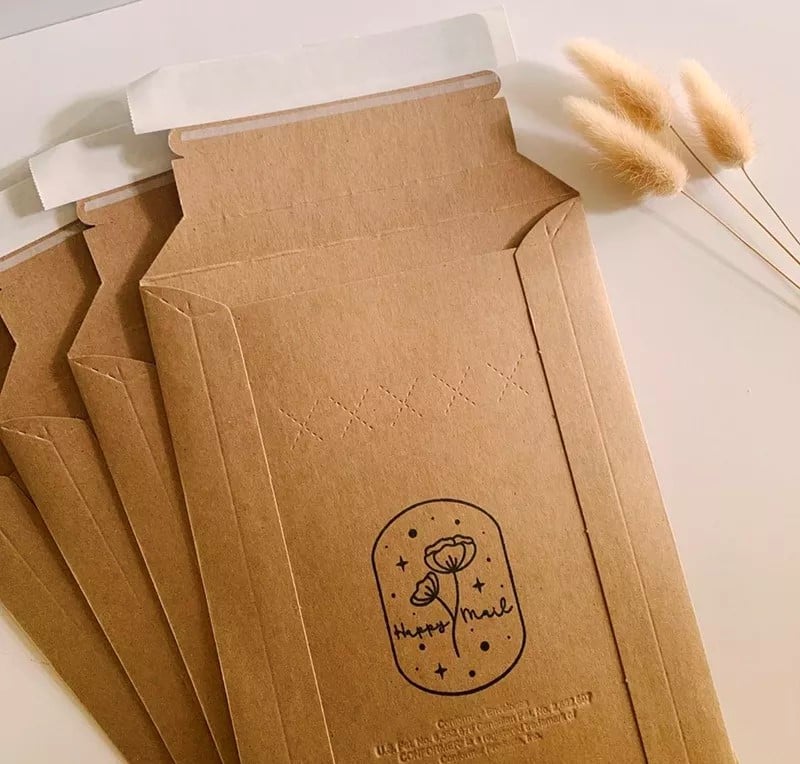
Cherish Studio co. use recyclable craft mailers to send online orders to customers. It's sturdy enough to protect orders in transit, while also making it easy for customers to dispose of responsibly.
Of course, paper packaging alone isn't the complete solution. Although renewable, some 3 billion trees are harvested every year to meet our packaging needs – a rate that makes its sustainability questionable. That's why it's important to look for FSC-certified paper packaging products that ensure sustainable practices surrounding harvesting, labor, and emissions.
Biodegradable packaging options were once a rarity in the marketplace, as well as relatively costly. But substantial growth in this sector, combined with innovations in manufacturing, have made it much more cost-effective for businesses. If you're wanting to invest in sustainable packaging, there are a growing number of alternatives on the market that put zero waste and lower greenhouse gas emissions at the heart of their design.
By moving towards a circular packaging economy - where resources are continually repurposed or renewed to provide ongoing use - merchants can reduce packaging waste and contribute to a greener e-commerce sector.
So, what does a circular economy for ecommerce packaging look like?
While recyclable packaging is a good option, packaging materials can only be regenerated so many times before they're no longer useable. This is why compostable materials are gaining traction as a long-term solution to ecommerce packaging waste and replacing single-use plastics.
So long as it's disposed of correctly, biodegradable packaging doesn't leave behind any harmful residues as it breaks down. Because this process takes weeks or months (as opposed to hundreds of years) consumers can feel confident that their purchasing decisions are contributing to a healthier planet.
So, what biodegradable packaging options are available to businesses?
Biodegradable materials such as corn starch and sugarcane are becoming increasingly popular for single-use packaging items, such as mailer bags and shrink wrap. Sendle produces 100% compostable satchels that break down within 90 days on a home or community compost pile.
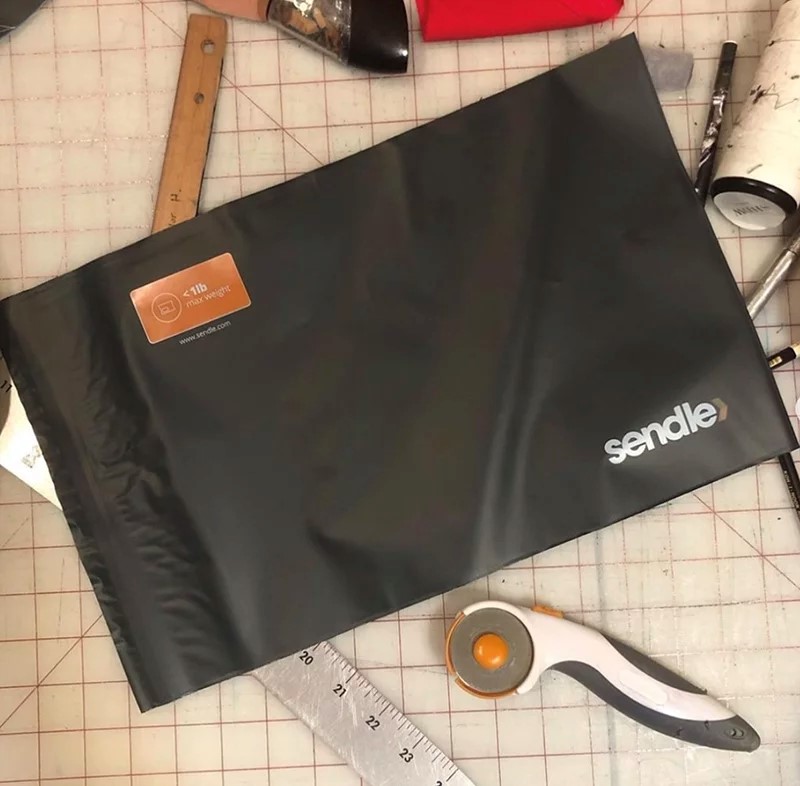
Yes, you read that right! Packaging made out of mushroom fibers is a fresh innovation that presents a compostable alternative to materials like Styrofoam. The packaging is literally grown around a biodegradable mold and requires no light or water, making it minimally resource-intensive to create.
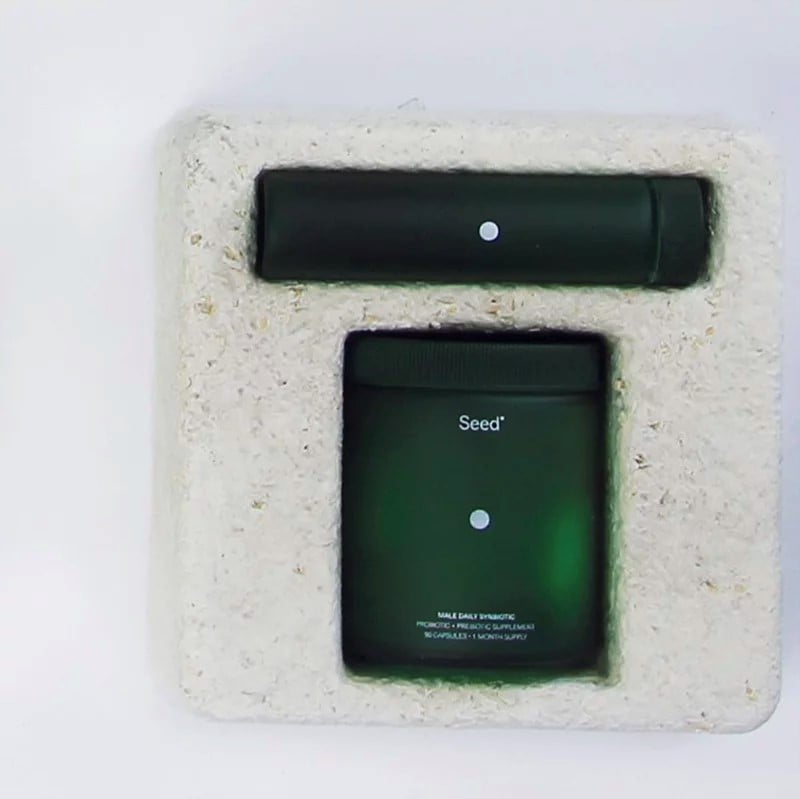
As R&D for sustainable packaging continues to accelerate, we can expect to see even more innovative solutions coming into the marketplace.
When packages are sent to customers, it's important that brands are thinking about the quality of the post-purchase experience – and this also includes the possibility of returns and exchanges.
High return rates in e-commerce mean that seamless returns processing has never been more critical. Single-use packaging designs take the ‘easy' out of ‘easy returns' by forcing customers to source their own packaging to sent items back to the warehouse. With this in mind, it's not hard to see why some 62% of consumers are frustrated by having to pay for return packaging or shipping.
Not only does single-use packaging add friction to the customer experience; it increases the likelihood of items being damaged in transit if they aren't packaged securely. A reusable e-commerce packaging solution offers your business the double advantage of lower packaging waste and more convenient returns management.
Choosing ‘return ready' packaging designs, like double-sealed mailers or zip-locked garment bags, saves both you and your customer a lot of money and hassle. If you can integrate this returned packaging into future orders, this circular economy approach lowers your packaging and shipping costs even further.
For customers who don't need to return items, reusable packaging designs still offer an extra level of value through being repurposed for other uses. Byron Bay Bath Bombs uses 100% recyclable cardboard cylinders to package its bath bombs. Their Instagram offers a variety of reuse suggestions outbound packaging, including plant pots, stationery holders, and dry goods containers:
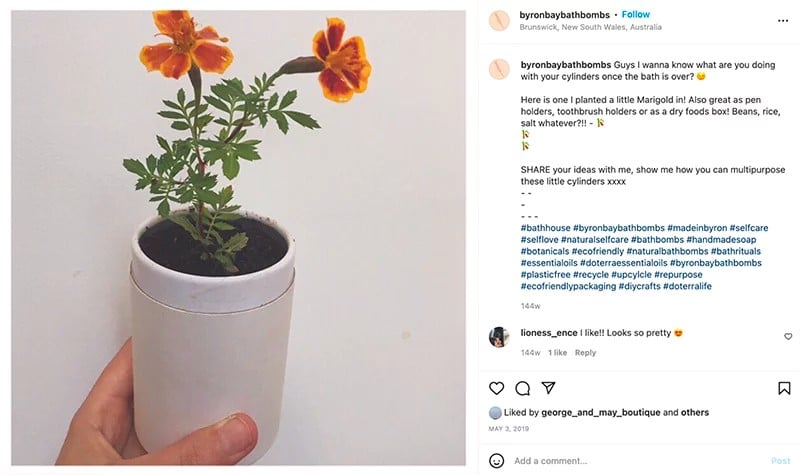
The verdict is clear. No online shopper wants to see a million tons of packaging waste piling up. As an e-commerce merchant, you're the one who's in a position to change this. As the demand for ecommerce grows, all online sellers have a responsibility to lessen their environmental impact.
Moreover, is it really fair to make your choice of packaging your customer's problem? Placing the onus on the consumer to deal with waste management is a long-running strategy by major corporate brands, but this is starting to wear thin.
By following the recommendations above, your business can become more eco-friendly, save money, and make customers happy. So, why not get started?